I'm having trouble when trying to calculate the average temperature by hour.
I have a data frame with date, time (hh:mm:ss p.m./a.m.)and temperature. What I need is to extract the mean temperature by hour in order to plot daily variation of temperature.
I'm new to R, but did a try with what I know: I first tried by transforming hours into numbers, then extracting the first two characters, and then to calculate the mean but it didn't work very well. Moreover I have so many files to analize that it would be much better to have something more automated and clean than the "solution" I found.
I believe it must be a better way to calculate averages by hours in R so I've been looking for the answer in other posts here. Unfortunately I couldn't find a clear answer regarding extracting statistics from time data.
My data looks like this
date hour temperature
1 28/12/2013 13:03:01 41.572
2 28/12/2013 13:08:01 46.059
3 28/12/2013 13:13:01 48.55
4 28/12/2013 13:18:01 49.546
5 28/12/2013 13:23:01 49.546
6 28/12/2013 13:28:01 49.546
7 28/12/2013 13:33:01 50.044
8 28/12/2013 13:38:01 50.542
9 28/12/2013 13:43:01 50.542
10 28/12/2013 13:48:01 51.04
11 28/12/2013 13:53:01 51.538
12 28/12/2013 13:58:01 51.538
13 28/12/2013 14:03:01 50.542
14 28/12/2013 14:08:01 51.04
15 28/12/2013 14:13:01 51.04
16 28/12/2013 14:18:01 52.534
17 28/12/2013 14:23:01 53.031
18 28/12/2013 14:28:01 53.031
19 28/12/2013 14:33:01 53.031
20 28/12/2013 14:38:01 51.538
21 28/12/2013 14:43:01 53.031
22 28/12/2013 14:48:01 53.529
etc (24hs data)
And I would like R to calculate average per hour (without taking into account differences in minutes or seconds, just by hour)
Any suggestion? Thank you very much in advance!
Regards, Maria

